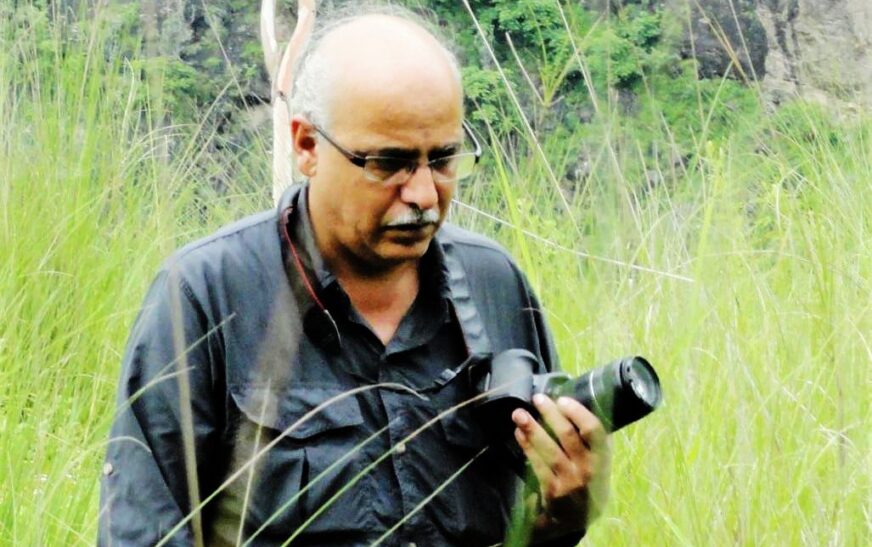Himanshu Joshi, an ardent lover of birds and seasoned traveller, brings a wealth of experience as the Editor of Terrascape. With a career spanning over four decades, including senior positions at renowned media houses like The Times of India, Hindustan Times, The Observer of Business and Politics, and Sahara Times, Joshi’s expertise in journalism and travelogue writing is unparalleled. In his profound exploration of the environment, Joshi passionately advocates for the significance of birds as crucial indicators of ecological balance. He articulates the symbiotic relationship between humans and birds. Moreover, he sheds light on our dependence on these avian creatures for various ecological services.
His exclusive interview with The Interview World, Himanshu Joshi delves into the vital role birds play in maintaining ecosystem health. Additionally, he offers valuable insights into strategies for protecting endangered bird species, particularly in the context of India. Joshi’s message resonates with bird lovers, urging collective action for the conservation of these precious creatures.
Q: What roles do birds play in our ecosystem that make them vital to its health and balance?
A: Birds, as vital members of our biotic ecosystem, hold a pivotal position in maintaining ecological balance. They are not merely passive participants but active contributors to the intricate web of life. Within this framework, birds occupy key niches in various food chains. They serve as both predator and prey, thereby influencing population dynamics and species interactions.
In addition to their fundamental role in food webs, birds perform multifaceted functions within ecosystems. One such function involves pest management, where birds act as natural controllers of insect populations. By consuming insects in diverse habitats such as gardens, farms, and forests, birds help to regulate pest numbers, mitigating potential damage to crops and vegetation.
Moreover, certain bird species play essential roles in pollination and seed dispersal, two vital processes that drive the reproduction and distribution of plant species. Nectar-feeding birds, for instance, facilitate pollination by transferring pollen from flower to flower as they seek out nectar. Similarly, fruit-eating birds aid in the dispersal of seeds by ingesting fruits and later excreting seeds in new locations, thereby contributing to the establishment and dispersal of plant populations.
In island ecosystems, seabirds emerge as significant contributors to nutrient cycling. Through their guano or excrement, seabirds enrich both soil and water with essential nutrients, bolstering the productivity of terrestrial and aquatic ecosystems alike. Human agriculture also benefits from this nutrient influx, with bird droppings being harvested and utilized as organic fertilizers due to their high concentrations of nitrogen, phosphate, and potassium—key nutrients essential for plant growth and development.
Furthermore, birds play a critical role in regulating insect populations in natural systems, particularly in forests. Their voracious appetites lead them to consume vast quantities of insect pests, including budworms and various non-outbreak species. This natural pest control service provided by birds is estimated to be worth considerable economic value, with potential benefits amounting to billions of dollars annually in environmental services. Thus, birds emerge not only as charismatic avian species but also as ecological guardians, safeguarding the integrity and functionality of ecosystems worldwide.
Q: How can we effectively safeguard endangered bird species while maintaining the balance of our ecosystem?
A: Numerous endangered species face the dire prospect of extinction across the globe, imperilled by the relentless march of industrialization, rampant overhunting, and reckless population management practices. Often, these majestic creatures meet their untimely demise due to the insatiable demand for their fur, precious oils, or as a source of sustenance.
In response to this pressing crisis, a cadre of international organizations, including the WWF, NRDC, and Endangered, have taken decisive action. Through concerted efforts, they strive to raise awareness among communities worldwide, fostering collaboration with local stakeholders to safeguard vulnerable bird populations. However, their noble endeavors alone cannot fully address the magnitude of the threat.
It is incumbent upon each of us to rally to the cause, and to stand as stewards of our shared natural heritage. We must unite in a collective endeavor to protect and preserve the endangered avian species that grace our localities, ensuring their survival for generations to come.
Q: How many bird species in India are currently classified as endangered?
A: The International Union for Conservation of Nature has classified ten bird species in India as critically endangered, including the Great Siberian Crane, Indian Bustard, White-backed Vulture, Red-headed Vulture, Forest Owlet, Spoon-billed Sandpiper, White-bellied Heron, and more. Their dwindling numbers are attributed to a myriad of factors. Habitat loss, modification, fragmentation, and degradation are primary culprits, coupled with the pervasive threat of environmental contaminants. Additionally, illegal poaching continues to plague these vulnerable species, further exacerbating their plight. Moreover, rapid changes in land use patterns further threaten their habitats, compounding the challenges they face. These combined pressures underscore the urgent need for conservation efforts.
Q: What overarching message do you wish to convey to those passionate about birds?
A: Bird enthusiasts play a vital role in conservation efforts by identifying and addressing the challenges faced by local bird populations. By creating a synchronized ecosystem, they provide essential support for the thriving of these species. It’s essential to recognize that our dependency on birds outweighs their dependency on us; their contributions to the ecosystem and human well-being are immense. Therefore, fostering a symbiotic relationship is not only beneficial but imperative. I earnestly urge everyone to embrace a love for birds and actively engage in initiatives aimed at making our ecosystem conducive to their coexistence, ensuring a harmonious balance for generations to come.









3 Comments
V nice
You are my inhalation, I have few web logs and often run out from to brand.
Well I truly liked studying it. This information offered by you is very useful for good planning.
Comments are closed.